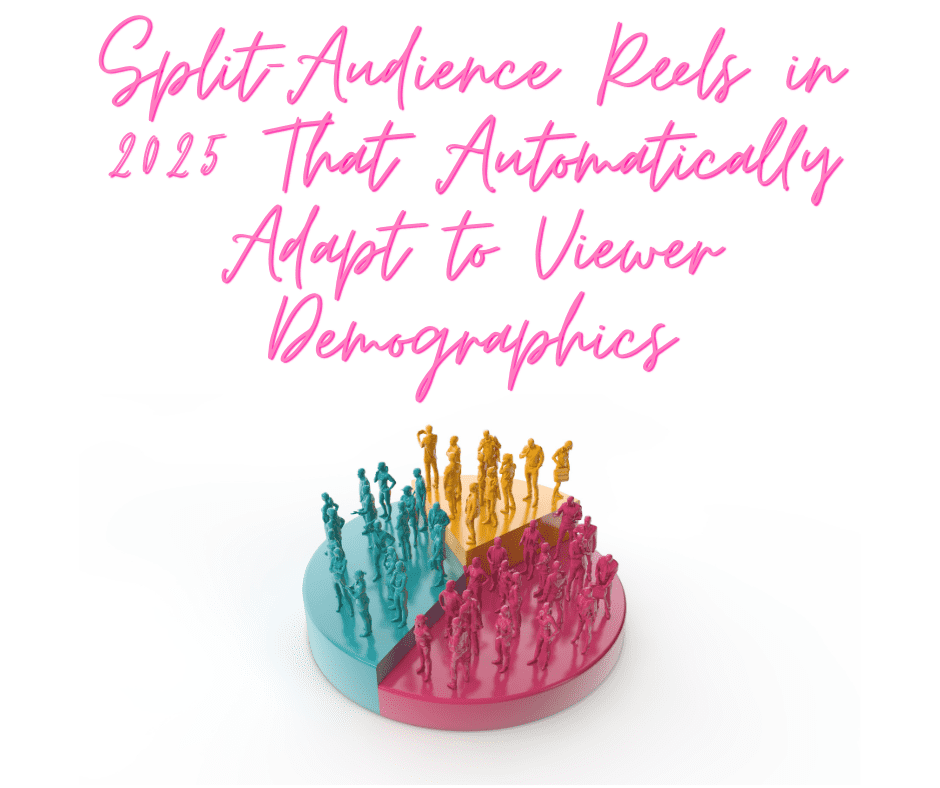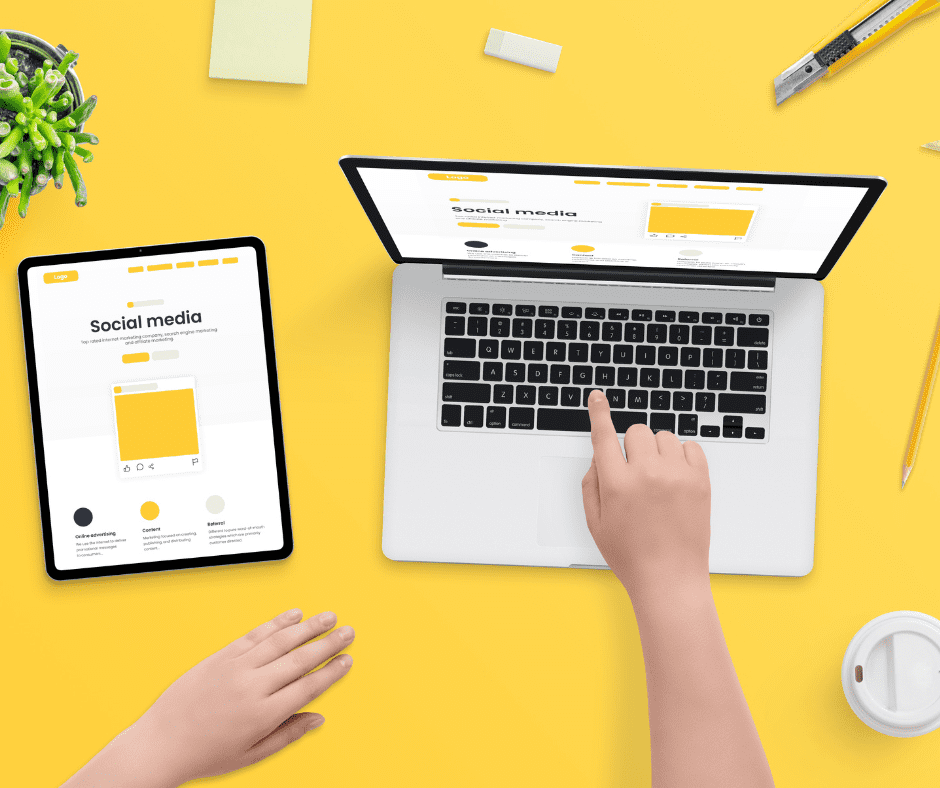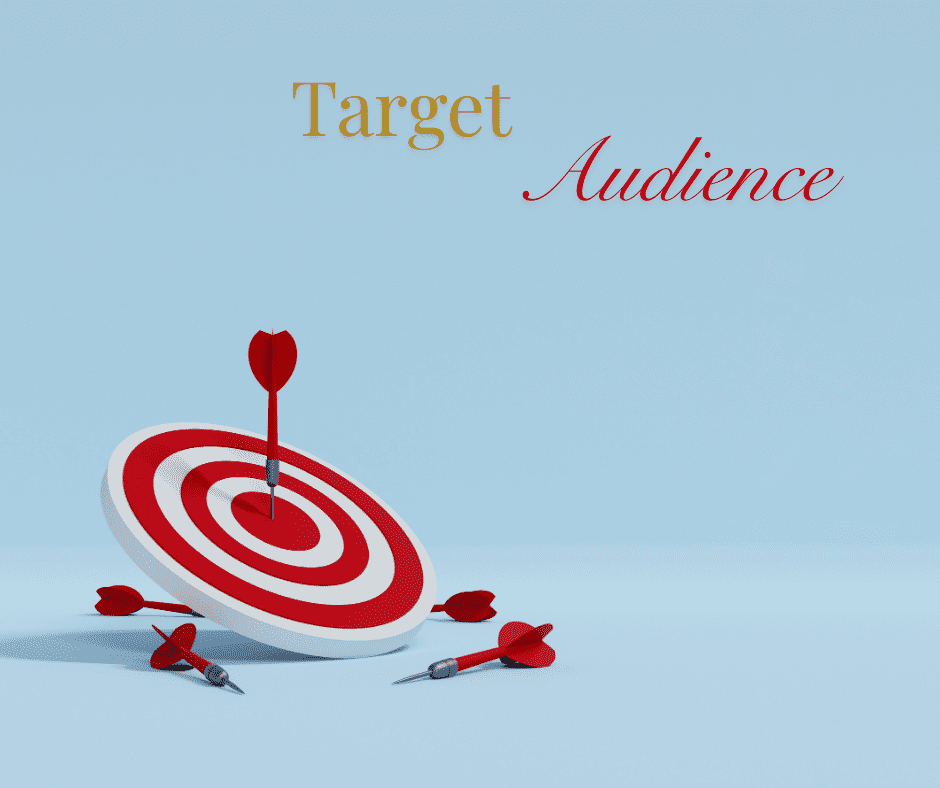Last Updated on August 15, 2025 by Val Razo
In 2025, mastering how to create reels that automatically adapt to your target audience is becoming essential for anyone using Instagram seriously. With the platform’s evolving Instagram reels algorithm, smart creators and brands now rely on tools that allow them to customize each reel on Instagram based on who’s watching — all without manual intervention. This shift toward short-form video personalization means you’re no longer stuck creating one-size-fits-all video content.
As Instagram users scroll endlessly through the reels feed, capturing attention within the first 90 seconds is crucial. This is where the power of custom audience adaptation comes into play — tailoring reels content based on demographics, location, and behavior. From optimizing Instagram reels templates to choosing the right audio on Instagram, every element of your reels strategy must be crafted to match different viewer segments.
If you’re looking to use Instagram in smarter ways, especially for social media marketing, it’s time to explore how Instagram Reels in 2025 are changing the game. Whether you’re a creator aiming to make your content stand out, or a business looking to boost reels performance, this guide breaks down the future of reels vs static content — and how to stay ahead using Instagram analytics and advanced targeting.
Understanding the Instagram Reels Algorithm in 2025
How the Instagram app tailors video content to user behavior
The Instagram Reels algorithm in 2025 has evolved into a highly personalized engine that tailors each reel on Instagram based on a user’s specific interests, habits, and interactions. Unlike the early days of Reels, the Instagram app now considers far more than just likes or follows — it evaluates how long someone watches a video clip, whether they rewatch it, and even how quickly they scroll past.
This behavior-driven model helps Instagram determine what type of content is most likely to perform well for each viewer. For example, a user who regularly watches educational reels may start seeing more how-to videos, while someone who engages with humor and music might see entertaining, audio on Instagram-driven clips. It’s a massive shift that rewards creators who make a reel with clear intent and structure.
To thrive within the algorithm, you need to think beyond just trends. The system prefers engaging reels that match user patterns, adapt to format preferences (like short reels vs. long-form), and include contextual elements such as hashtags, audio, and location. Using Instagram reels templates smartly — designed to reflect specific audience behaviors — increases the chance of appearing in the reels feed or even getting featured in the reels tab.
Ultimately, the algorithm is focused on keeping your audience engaged, and it does so by continually learning and updating what it shows to each active Instagram user — meaning your reels content must be optimized and intentional.
Custom audience segmentation and real-time analytics
One of the most groundbreaking features of Instagram Reels in 2025 is its ability to segment a custom audience in real time. This means that instead of creating one generic reel, creators can now design different versions — or adaptive content layers — that cater to different audience segments based on age, location, interest, and platform behavior.
Through enhanced Instagram analytics, creators gain access to detailed insights such as who’s watching reels, when they’re most active, and what kind of social media content keeps them watching past the first 3 seconds. These insights are especially useful for businesses practicing social media marketing, where every second of viewer attention can drive clicks, follows, or sales.
Real-time data empowers creators to enhance your reel performance dynamically. You can now test and adjust captions to make your content more relevant, track how many reels a week drive engagement, and compare performance across types of reels using detailed reels insights. Want to know the best time to post reels? The analytics dashboard will now show you that based on your unique audience patterns.
By combining these tools with a strong Instagram strategy, creators can develop content that not only speaks directly to their target audience but also performs better in the algorithm — leading to more reach in the reels section, improved visibility on your Instagram profile, and better overall results across your social media strategy.
When I started experimenting with adaptive Reels, I created two versions of the same video — one for new followers and one for returning customers. The second version converted 3x more.
Why Split-Audience Reels Matter for Social Media Marketing
Boost reels performance with demographic targeting
In the saturated world of social media content, standing out requires more than just a flashy edit or trending audio. It requires reels content tailored to specific audience segments. This is exactly why split-audience reels are becoming central to successful social media marketing strategies in 2025.
Using demographic data—such as age, gender, location, language, or interests—creators can now build reels on Instagram that automatically adapt to the viewer’s profile. Instead of producing a single, generic piece, marketers can design multiple versions of a video clip that speak directly to a custom audience. For example, a product demo reel might emphasize different features depending on whether the viewer is a college student or a working professional.
This method of creating engaging reels boosts relevance, which leads to higher watch time, more shares, and stronger conversions. The Insta reels algorithm rewards this behavior by pushing content with high audience retention into more feeds via the reels tab and Instagram feed. When your reel feels tailored to the individual, they’re far more likely to engage — and that engagement signals quality to the algorithm.
Marketers now realize that reels provide not just reach, but precision. They help enhance your reel strategy by making every second of your content matter to the right person. Whether you’re a small brand or a global company, the ability to target viewers on a granular level can dramatically boost reels performance.
Instagram reels vs traditional one-size-fits-all content
The debate of Instagram Reels vs traditional, static video content isn’t just about format — it’s about function. Traditional content treats the audience as a single mass, delivering the same message to all. In contrast, IG Reels in 2025 are built for adaptability, letting you make your reels change depending on who is watching.
This flexibility gives Instagram reels for business a competitive edge. Instead of hoping one message resonates across all demographics, businesses can now create reels that subtly shift in tone, visuals, or calls to action depending on the viewer. That makes a single campaign feel personal, relevant, and ultimately, more effective.
Plus, with the rise of social media engagement being measured in seconds, short-form video like Reels often performs better than longer formats. Studies show that reels generate higher completion rates and more interactions than static videos or standard posts. Why? Because they’re more fun, interactive, and easier to consume — especially when designed to reflect what works best for your audience.
By moving away from the one-size-fits-all model, creators and brands unlock the ability to make a reel that feels one-to-one instead of one-to-many — a game-changer for Instagram marketing and a core pillar of modern social media strategy.
Instagram Reels receive 22% more engagement than regular video posts.
Tools and Templates to Create Reels That Adapt Automatically
Using Instagram reels templates for dynamic customization
If you want to create engaging reels that adapt to different viewer demographics, your workflow starts with the right Instagram reels templates. These templates are no longer just aesthetic — they’re strategic. In 2025, many templates come with built-in features that support dynamic content layers, allowing creators to insert different elements that change based on the viewer’s custom audience profile.
For example, you can now build a template that automatically adjusts text overlays, stickers, or even background video content depending on the audience segment. A fitness coach might use one version of a reel on Instagram that displays beginner tips for new users, while advanced workouts are shown to returning viewers. The result? One short video delivers two completely different experiences — automatically.
These dynamic templates are accessible directly within the Instagram app or through integrated third-party free social media tools. Many of these tools sync with your Instagram analytics to guide content decisions like length, format, or even optimal time to post Instagram reels. Some even recommend captions to make your content more effective for specific groups.
Whether you’re a business looking to make your content scale efficiently or a solo creator trying to reach new fans, smart templates eliminate guesswork. They ensure that your reels content is not only well-designed but also well-targeted — helping you produce engaging reels at scale.
How to use free social media tools to create reels for different audiences
Beyond native Instagram features, a variety of free social media tools now make it easier than ever to design, split-test, and publish adaptive reels content. Tools like Canva, CapCut, and Later offer robust libraries of Instagram reels templates that can be customized per demographic.
Want to produce three versions of one reel for different age groups? No problem. These tools allow you to pre-load variations of your video clip, change CTAs, update visuals, and publish everything through the same interface. Many even provide access to social media analytics, helping you measure how each version performs with your target audience.
These tools also help streamline editing reels, offering drag-and-drop interfaces that save time while improving production value. Paired with smart scheduling and data-driven suggestions, they allow you to create and post Instagram reels consistently — even if you’re managing multiple campaigns at once.
The best part? You don’t need a massive budget. With a well-defined reels strategy, the right tools, and a strong understanding of your audience, you can create high-performing content that feels personalized and professional.
Step-by-Step: How to Make a Reel That Changes Per Viewer
Choosing the right audio on Instagram for segmented audiences
Music and sound play a powerful role in helping your reel on Instagram connect with the right viewer. In 2025, the audio on Instagram is more than just a vibe — it’s a signal to the algorithm and a cue to your target audience. The sound you choose can affect how your short video is distributed, especially when paired with other data like location, age group, or viewing history.
When planning adaptive reels content, selecting the right type of content and audio combination becomes essential. For example, Gen Z users may respond best to trending or remixed sounds, while older audiences may engage more with clear voiceovers or music that aligns with educational or professional tones. This is where Instagram analytics comes into play — showing you what sounds are trending with which segments of your Instagram users.
To maximize this, use free social media tools or the Instagram app itself to preview how different video clips perform with your chosen audience groups. Platforms now let you A/B test different audio choices and see what’s keeping your audience engaged. Smart creators use this data to align their reels strategy with what works best for your audience, rather than just following global trends.
By selecting audio intentionally and using it differently for each segment, you can enhance your reel performance and improve discoverability across the reels tab, Instagram feed, and Instagram channel.
Using insights from my Reels dashboard, I realized my best-performing content was 40–60 seconds long with a clear call-to-action in the first five seconds. That changed how I storyboard every Reel.
Using AI to optimize captions and visual elements
In addition to audio, captions and visuals are now powered by AI to match your viewer’s preferences. When you make a reel, the Instagram app or external tools can automatically generate or recommend captions to make your content clearer for each demographic. For instance, captions can be shorter and playful for casual viewers, or longer and informative for those looking for educational reels.
Visuals also adapt: background colors, filters, and even on-screen text can shift depending on your custom audience settings. If you’re sharing Instagram reels for business, for example, a product highlight might feature a price tag for one audience and a feature list for another. These micro-adjustments help your reels provide maximum relevance with minimal effort.
AI-powered editing platforms, many of which integrate directly with Instagram, offer dynamic tools that let you prepare all of this in advance. You can create variations of your reels content, choose how each looks and sounds, and automate publishing based on your social media strategy.
And remember — once you publish your reel, you can track how well each version performs using built-in reels insights. This gives you the power to refine future posts, increase engagement, and continuously boost reels impact through data-driven decisions.
Instagram Reels Tips to Maximize Reach and Engagement
Reels vs stories: Which format works better for targeting?
When it comes to reaching specific audience segments, the debate of Reels vs Stories is more relevant than ever. While both formats live within the Instagram app and are essential to a strong Instagram strategy, they serve very different purposes — especially for target audience targeting in 2025.
Instagram stories are great for real-time updates, community engagement, and informal content. They’re ephemeral, casual, and often used to connect with people who already follow your Instagram profile. However, their discoverability is limited.
On the other hand, Instagram reels are designed to reach new users. Thanks to the reels feed, the Instagram algorithm distributes them to a wider range of viewers — especially if they align with trending audio on Instagram, visual styles, or behaviors identified through Instagram analytics. This makes Reels far more powerful for building awareness, especially with a custom audience you haven’t reached yet.
If your goal is visibility and reach, reels offer better discovery. If you want to reinforce messaging or maintain community interaction, stories can complement your reels strategy. Smart creators are blending both — using Stories to drive traffic to reels content, and Reels to attract new followers who then engage with Stories.
In late 2023, fitness brand Gymshark launched a series of split-audience Reels targeting men and women separately using AI-driven captions, different visual styles, and time-of-day publishing strategies.
Result:
+34% engagement increase
+19% conversion rate on reel-linked product pages
2x follower growth in three months
When and how to post Instagram reels for best performance
Timing and consistency matter just as much as content. To boost reels visibility, it’s essential to consider the best time to post Instagram reels, which depends on your audience’s habits. Thanks to tools integrated into the Instagram app, you can now track peak activity periods by location, age group, or interest category.
A good baseline? Aim to post Instagram reels 3–5 reels a week. This keeps your content fresh in the reels tab, improves ranking within the Instagram algorithm, and increases your chances of being featured in the reels section. However, posting frequency isn’t enough — you also need consistency in content quality and format.
Each time you share your reel, monitor how it performs using reels insights. If a specific type of content gets more likes, saves, or completions, double down on that style. Whether it’s shorter reels under 30 seconds or short-form video that tells a story in 60–90 seconds, you should adjust based on what’s keeping your audience engaged.
Also, don’t forget about formatting: always add captions to make your reel accessible, and consider testing different styles and reels ideas to find what truly resonates. Over time, a data-driven, adaptive approach to make your Instagram reels will generate stronger engagement and growth.
Conclusion
In 2025, the evolution of Instagram reels has shifted from simple video posts to smart, adaptive tools that can dramatically enhance your social media marketing strategy. Whether you’re a content creator, entrepreneur, or brand manager, learning how to make a reel that speaks to a custom audience isn’t just a nice-to-have — it’s essential.
By understanding how the Instagram reels algorithm works, leveraging tools to build dynamic Instagram reels templates, and optimizing every video clip for segmented engagement, you position your content to outperform generic posts. You’re no longer just creating — you’re strategically tailoring experiences that meet your audience where they are.
So, the next time you use Instagram, think beyond one-size-fits-all. Focus on building content that adapts to behavior, location, interest, and timing. Use the insights from your Instagram analytics, test what’s keeping your audience engaged, and refine your approach every time you post Instagram reels.
With the right tools, strategy, and mindset, your Instagram reels in 2025 won’t just reach more people — they’ll resonate with the right people. And that’s the difference between simply being seen… and truly making an impact.
Frequently Asked Questions
How do Instagram videos and reels differ in 2025?
Instagram videos are typically longer, more polished, and live in the main feed or IGTV. In contrast, Instagram Reels are short-form videos (up to 90 seconds) designed for fast engagement and algorithm-driven discovery. Reels are favored for quick, viral content — and they currently get better reach, especially when used with trending audio.
How often should you post reels per week for maximum engagement?
A strong benchmark is 3 to 5 reels per week. Posting regularly helps you stay visible in the Reels tab, and the algorithm rewards consistency. However, quality still matters — focus on creating engaging reels that speak to your audience’s needs rather than posting just to meet a quota.
What makes Instagram reels great for brand growth?
Reels are great for showcasing personality, product features, or quick tips in a visually engaging format. They’re discoverable beyond your followers, which means they can drive new traffic to your Instagram content or even convert viewers into customers. Paired with analytics, Reels can outperform traditional posts when done well.
How does Instagram Reels compare to TikTok in 2025?
The Instagram Reels and TikTok battle is still ongoing, but Instagram has narrowed the gap with better integration, more robust templates, and audience targeting. While TikTok still leads in creator trends, use the Reels if you’re focused on growing within the Instagram ecosystem — especially for established Instagram channels or businesses.
Do longer reels or shorter reels perform better?
The length of your reel should depend on the content type. Reels like quick tutorials or entertainment usually perform best under 60 seconds. However, if you’re sharing value-dense Instagram content, going up to 90 seconds can work — as long as you keep it engaging. Data shows that reels receive 22% more engagement on average than standard video posts when well-optimized.
Author Bio
Val Razo
Val Razo is a skilled professional in the field of Instagram Marketing. With over five years of experience as a freelance Social Media Marketing consultant, Val has assisted numerous small and medium-sized businesses in achieving their goals.




